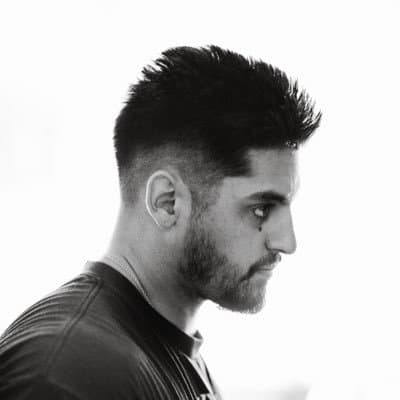How TV Advertising Became A Full-Funnel Solution
The Evolution of TV
With your smartphone, it’s like having a TV in your hands.
With your TV, it’s like having a smartphone mounted on your wall.
Because of that, TV targeting is specific and precise.
For example, my fiance is pregnant - which means A LOT of the TV ads I see are relevant to baby products.
Coincidence? Or am I just noticing them now?
Not even close.
30-second slots on your TV are now just as targeted as that Facebook ad you thought was listening to you having a conversation with your friend.
Thanks to data-driven media buying and advanced linear and streaming TV measurement, advertisers can now approach TV with the same performance-focused mindset they’re used to on digital.
The 4-Part Framework For Successful TV Advertising
When it comes to TV advertising, there is a 4-part framework Tatari uses:
1. How To Approach Testing
One key to successful testing is going into a campaign in search of what works from the jump - instead of hoping to find something to build from.
For example, when Made In Cookware started TV advertising, they ran a test campaign with a $75k budget with the goal of finding out if their product would resonate in a contextual environment more than a controlled environment.
For Made In, that meant advertising on programs like HGTV, Food Channel, Cooking Channel, and CNN.
2. Finding New Audiences
Knowing contextual advertising worked on TV for Made In was the starting point.
The second was figuring out if they could unlock non-contextual advertising and expand into new audiences.
They struck gold twice - by advertising during live sporting events and during big political events.
How?
Firesales.
This is when there is a last-minute sale on premium inventory that needs to be sold. Sometimes even up to 80%+ which is a huge opportunity for TV advertisers looking to test and scale.
Plus, thanks to Tatari’s similar inventory tool (lookalike modeling for TV), Made In was able to identify which other channels/programming sports and news viewers were watching.
3. Optimizing Creative
The third part of this framework is optimizing creative.
Made In ran multiple A/B tests comparing creatives made for Facebook/Instagram vs. creative made native to TV, which decreased the CPV (Cost Per Visitor) by 50%.
4. Scaling
Made In scaled their TV campaign to 10-15x the impressions in comparison to Facebook and IG while increasing their targeting pool by 400k and conversions on streaming TV by 4.5X.
The next step is plugging this framework into a full-funnel solution.
TV’s Evolution Into A Full-Funnel Solution
The traditional funnel is 3-parts:
- Top of funnel = Awareness driven
- Middle of funnel = Consideration Driven
- Bottom of funnel = Conversion Driven
And TV can play a significant role in all of them.
Because with the evolution of TV advertising, you can track the full customer journey from impressions to conversions.
And with TV advertising estimated to reach $77.5 billion by 2024, there are no signs of slowing down.
TV For Top of Funnel
Let’s start TOF…
A successful brand awareness campaign isn’t getting in front of everybody; it’s getting in front of the right people.
Getting in front of the right people starts with testing and targeting.
For example, Nutrafol pivoted towards TV advertising to drive brand awareness.
To start, they ran a test campaign.
This gave them insights into:
- Different audience segments
- Different life stages
- Different value propositions
- Specific programs
- Times of day
Which then served as the base for bigger and more efficient media buys that both increased response rate and provided a halo effect on digital channels.
Another example was Fiverr’s Superbowl ad in 2020, where they used TV advertising to cut acquisition costs by 75%.
Fiverr bought a 30-second slot in the third quarter of the Super Bowl - and after airing, both website traffic and search volume took off.
The initial goal of the 30-second Super Bowl slot was to educate the consumer on Fiverr and what they offer during a time when remote work was boomin’.
The end goal was to drive viewers to visit Fiverr’s site, increase product awareness, and build a huge retargeting pool.
Then the magic happened when Fiver retargeted website visitors on streaming TV platforms, leading to a 75% decrease in acquisition costs.
You can watch both the Super Bowl ad & the re-targeting ad here.
Transitioning To The Middle Of Funnel
When we think of Middle Of Funnel, we think of the middle of the campaign.
Where optimization takes place before scaling for conversions.
For Made In, that was optimizing:
- Creative
- Segmentation
- Placements
The deodorant company Lume did the same thing.
They found early success with TV advertising by taking some of their top digital creative and testing it. Their test revealed where their audience was watching and which segments were driving the most conversions, allowing them to double down and scale spending.
This led to a massive Q4 where they reached 38.9M consumers while hitting a $2.98 CPV.
Ending It At The Bottom Of Funnel
Lastly, the moment of truth - converting eyeballs into customers.
So, let’s talk about how Onewheel, the single-wheel electric skateboard, did it.
First, it started with a Youtube Live event where they introduced their two new products to increase awareness around the product.
The second part of their strategy was to air ads across premium Linear TV and Connected TV inventory to drive site traffic and consideration.
From the linear side, Onewheel targeted sports events post their Youtube Live event.
On the connected side, they targeted adults from 18-49 on streaming services like Hulu, Discovery, Peacock, and Paramount+.
This now bridges to the second part of the campaign focused on driving purchases.
Onewheel set up a retargeting campaign on connected TV for people who visited the website after seeing a TV ad but didn’t make a purchase. This strategy drove an increase in incremental sales.


